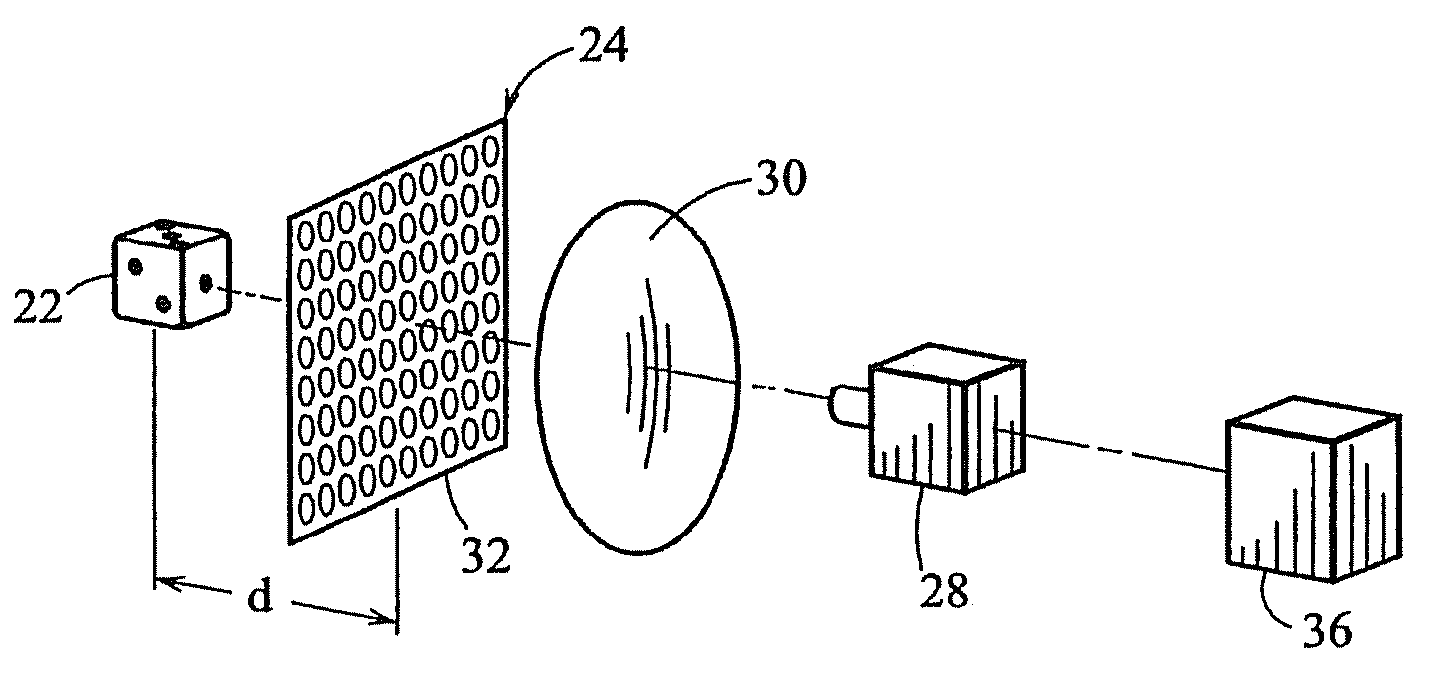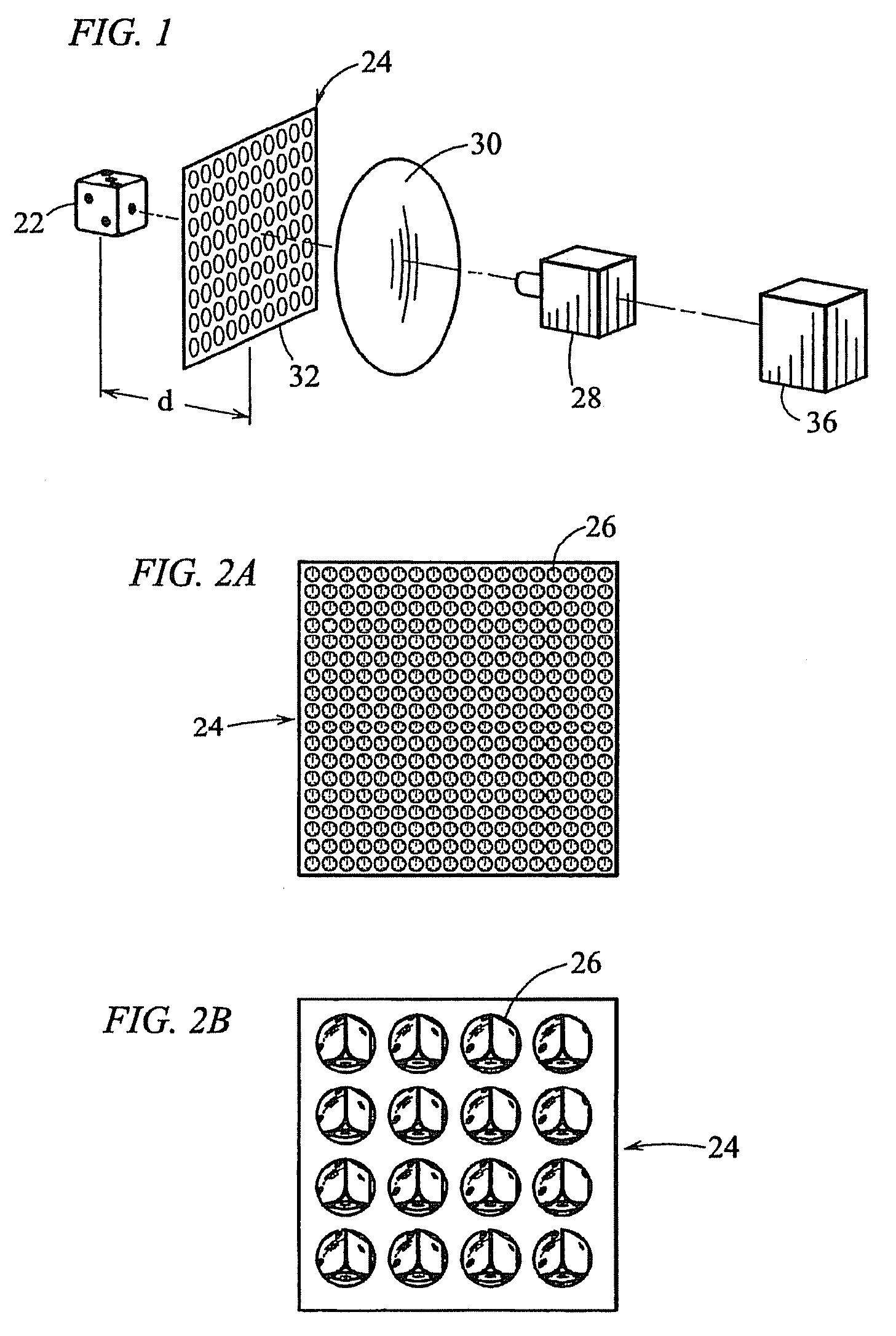Integral three-dimensional imaging with digital reconstruction
a three-dimensional image and digital reconstruction technology, applied in the field of integrated three-dimensional image and digital or optical reconstruction, can solve the problems of resolution, dynamic range, and adverse effects on the overall quality of the reconstructed image obtained by optical integral imaging, so as to enhance the reconstructed image and improve the quality of the imag
- Summary
- Abstract
- Description
- Claims
- Application Information
AI Technical Summary
Benefits of technology
Problems solved by technology
Method used
Image
Examples
Embodiment Construction
[0023] Referring to FIG. 1, a system for obtaining image arrays is generally shown at 20. A three-dimensional object (e.g., a die) 22 is illuminated by light (e.g., spatially incoherent white light). A micro-lens array 24 is placed in proximity to the object 22 to form an elemental image array 26 (FIGS. 2A and B) which is focused onto a detector 28, such as a CCD (charge coupled device) camera by a lens 30. The micro-lens array 24 comprises an N×M array of lenses 32 such as circular refractive lenses. In the present example, this N×M array comprises a 60×60 array of micro-lenses 32 in an area of 25 mm square. The magnification factor of the elemental image array formed by the camera lens 30 is adjusted such that the size of the elemental image array becomes substantially the same as the size of the imaging area of the CCD camera 28. In the present example, the distance between the object 22 and the micro-lens array 24 is 50 mm. Also, in this example, the camera lens 30 has a focal l...
PUM
 Login to View More
Login to View More Abstract
Description
Claims
Application Information
 Login to View More
Login to View More - R&D
- Intellectual Property
- Life Sciences
- Materials
- Tech Scout
- Unparalleled Data Quality
- Higher Quality Content
- 60% Fewer Hallucinations
Browse by: Latest US Patents, China's latest patents, Technical Efficacy Thesaurus, Application Domain, Technology Topic, Popular Technical Reports.
© 2025 PatSnap. All rights reserved.Legal|Privacy policy|Modern Slavery Act Transparency Statement|Sitemap|About US| Contact US: help@patsnap.com



